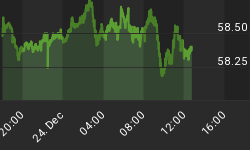The highest number of U.S. closures of major retail chains on record is 7,000 in 2008--the start of the financial crisis. So what gives now?
A decade later, it barely raised an eyebrow when some 8,000-retail stores closed their doors in 2017. And even that record was obliterated against last year, with this year on track to shatter yet another closure record.
So far this year, retailers have announced more than 6,100 store closures, but that number is expected to be even higher, according to Business Insider.
The numbers seem to suggest that this may be the beginning of the end for brick and mortar retail.
According to estimates from Cushman & Wakefield, retailers are expected to close roughly 9,000 stores this year, followed by another 12,000 stores in 2020.
Filling in the gap is … Amazon and to a lesser extent, its online retail rivals.
The e-commerce giant is expected to account nearly half of U.S. e-commerce sales by 2026.
Still, even when doors are closing at a record pace, online retail sales in the U.S. passed the $517-billion mark in 2018. That represents a 15-percent increase compared with 2017. The growth in retail sales in physical stores reached 3.7 percent last year, and e-commerce now accounts for 14.3 percent of total retail sales compared to the 5.1 percent a decade ago.
The numbers don’t seem to add up to such a dire state of affairs for brick-and-mortar retail. But while retail is expanding, online sales are expanding disproportionately more.
According to the recent analysis by UBS, each 1-percent increase in online penetration will lead to the closure of 8,000 to 8,500 physical retail stores.
The bottom line?
At the current rate, we could be looking at 75,000 store closures by 2026. That represents 7 percent of the American retail establishment.
Related: Climbing Stocks Weigh On Gold, But A Turnaround May Be Near
UBS breaks it down even further, by retail category, and clothing and clothing accessory stores fare the worst: Estimates are that of those predicted 75,000 closures, 20,700 will be clothing stores, followed by a predicted 9,800 closures for consumer electronics stores, 84,00 for furniture stores and 5,900 for sporting goods.
And it’s not just about closing a few doors because retailers have too many locations: It’s increasingly about brick-and-mortar bankruptcy.
Among the chains to have already declared bankruptcy this year are Wet Seal, The Limited, MC Sports, Bob’s Sporting Goods/, BCBG Max Azria, Payless ShoeSource…
Gymboree and rue21 are also reportedly close to filing for bankruptcy, and there are at least a dozen other retailers on watchlists.
One type of retail that’s bucking the trend and defying the downward pull of gravity is the dollar chain--Dollar General, the Dollar Store, etc. These aren’t going anywhere. In fact, while others are closing their doors, these “dollar” chains have managed to add more than 7,000 retail spaces in the past five years. Dollar General, for one, is planning to open 975 stores this year alone.
Data also shows that the restaurant sector doesn’t seem to be haunted by the digital trends, The U.S. has averaged well over 24,000 new restaurants annually for each of the last six years.
But the food industry is working hard to collaborate with online businesses. The online food delivery market is expected to grow from $35 billion globally today to $365 billion by 2030.
Hundreds of thousands of retail workers have lost their jobs over the last decade amid record-high store closures, bankruptcies, and liquidations. According to Labor Department data, since 2017, retail has shed more than 140,000 jobs. In March alone, the sector added another 11,000 jobs to that loss sheet.
By Michael Kern for Safehaven.com

















